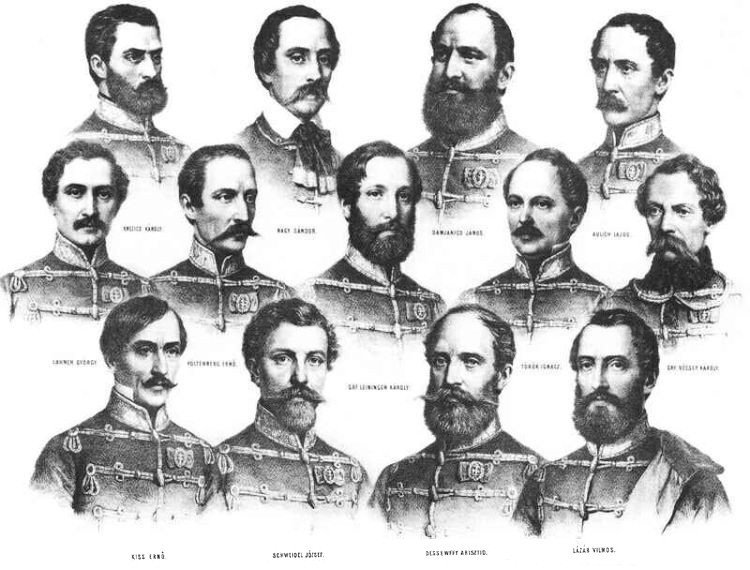National grieving day: 5 facts that put the tragedy of the 13 Martyrs of Arad into a different perspective

October 6th is a national grieving day in Hungary, as the 13 generals of the Hungarian Revolution were killed on this day in 1849 in retaliation in Arad. The generals and other fallen heroes of the Revolution are still respected and mourned today by Hungarians.
1 – Even though they fought for Hungary, not all of the 13 martyrs were Hungarians or of 100% Hungarian origins – half of these ‘exceptions’ could not even speak Hungarian. However, Hungarian history refers to them not by their original names but by the Hungarian versions of their first names:
- Károly Leiningen-Westerburg was of German nationality
- Lajos Aulich was German too, and he never even learnt to speak Hungarian
- György Lahner was also German
- Ernő Poeltenberg was of Austrian origins – though he learnt a bit of Hungarian, they were mostly swearwords which entertained his soldiers a lot
- János Damjanich was a Serbian national who enlisted in the Hungarian army in the hopes that if the Hungarians are victorious, they will grant more rights to the Serbs than the Habsburgs did
- Károly Knezics was Croatian
- Ernő Kiss and Vilmos Lázár were of Armenian ancestry; their respective families immigrated to Hungarian territories in the 1600-1700s.
2 – Hanging was considered humiliation for a person of high military rank at that time thus the martyrs were supposed to be shot. The Austrian general who was tasked with planning and carrying out the execution felt that
the martyrs did not deserve the bullet and should be humiliated publicly, for they have surrendered to the Russian forces instead of the Habsburg Empire.
Eventually, Haynau promised the bullet to four out of the thirteen martyrs, who were executed before the rest of them:
- Arisztid Dessewffy and Vilmos Lázár surrendered to the Austrian armies, thus were shown ‘mercy’
- Ernő Kiss never actually fought the Austrian armies
- József Schweidel clashed with Habsburg forces just once, after which he performed only administrative tasks.
[button link=”https://dailynewshungary.com/last-sentences-13-martyrs-arad/” type=”big” color=”black” newwindow=”yes”] These were the martyrs’ last sentences[/button]
Haynau also modified the order in which the rest of the martyrs were hanged, as originally János Damjanich was set to be hanged last – so that he would have to watch the others die and have no one to say goodbye to – but the Austrian general had a personal vendetta against Count Károly Vécsey, so, on his orders Vécsey was hanged last.
3 – Not all of their executions went ‘smoothly’, it must be noted. For example, Ignác Török had a heart attack before he was escorted to the gallows to be hanged, while the bullet hit Ernő Kiss only on the shoulder, so three soldiers stepped closer and he was shot in the head from close range.

4 – To punish Hungarians as a nation, even more, the Austrian emperor had Hungary’s first prime minister, Count Lajos Batthány, executed on the same day as the martyrs, in Pest.
5 – János Damjanich, who caused most of the trouble, had to be transported to the gallows on a cart, as his leg was broken. Eyewitnesses claimed that he was smoking a cigar on his way to his death.
Source: Daily News Hungary

